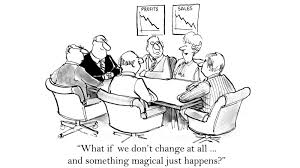 Programmatic techniques have brought speed and efficiency to media buying. Now it’s time for the creative side of the ad business to follow suit and become more efficient, nimble and innovative, according to an eMarketer report, “Creating Ads on the Fly: Fostering Creativity in the Programmatic Era.”
Programmatic techniques have brought speed and efficiency to media buying. Now it’s time for the creative side of the ad business to follow suit and become more efficient, nimble and innovative, according to an eMarketer report, “Creating Ads on the Fly: Fostering Creativity in the Programmatic Era.”
Frequency with Which US Digital Marketers Use Data Signals* to Adapt Creative Messages in Ads, Nov 2014 (% of respondents)
The creative process of the past isn’t sufficient to keep up with the needs of the programmatic era. But a significant amount of infrastructure change and mindset change will need to happen before the new rules of creative development emerge.
Looking to existing processes for guidance can help marketers and their agencies navigate the coming changes:
Consider it an evolution rather than a wholesale change: Digital marketers have long wanted the ability to target consumers with more personalized creative. Techniques such as dynamic creative optimization help pave the way toward future audience-driven creative processes.
“The truth is, our CRM business has been running daily optimizations for CRM for a long time,” said Christian Purser, chief digital officer at M&C Saatchi, during a panel discussion sponsored by Google in February 2015. “We’ve seen dynamic banner templates and dynamic banner ad serving. … It hasn’t just arrived from outer space. We’ve been building up in different ways to this moment.”
Compare the needs to that of social media: In some respects, this creative evolution has its roots in social media, where marketers and agencies have had to adapt their workflow to meet the demands of always-on marketing.
“When social burst on the scene seven or eight years ago, [we said], ‘How on earth would we produce seven bits of creativity a week?’ There’s no doubt we have to produce more and more, and make that more and more cost effective over time,” said Purser.
The key difference is the access to data that programmatic provides, said Luke Kintigh, global media and content strategist at Intel. “We’re used to it on the social side. But programmatic takes it to a whole other level with personalization, because of the proliferation of DMPs [data management platforms] and all of this data.”
Borrow from your content strategy: Thanks to social media, most marketers have a lot of content available. That content can easily be sliced and diced into various ads. OneSpot is one such company that takes a client’s content and turns it into multiple ad units.
“For each piece of content we’ll create several different sizes of display ads, mobile ads, social ads and soon, native ads,” said Matt Cohen, OneSpot’s president and founder. “We have a crawler that automatically looks at the client’s content, pulls out the headlines, the video, thumbnail, the full video, the photo. It also does an analysis of the content to figure out what it’s about, what are the keywords in it and so forth. Then it goes into an ad studio where the client can review it, and alternate variations can be created.”
With so much content available, “the chance that you’re going to have something for anybody in your target audience is extremely high, and you’re likely to have something that’s actually really good for that specific person,” Cohen said.
Look to direct marketing: “In the direct mail world, audience segments and matrices are created to inform the creative messaging that is distributed to different audiences. In programmatic, despite technology enabling the opportunity for as many audience segments as possible and the same variation in creative messages, this doesn’t happen,” said Paul Frampton, CEO of Havas Media.


